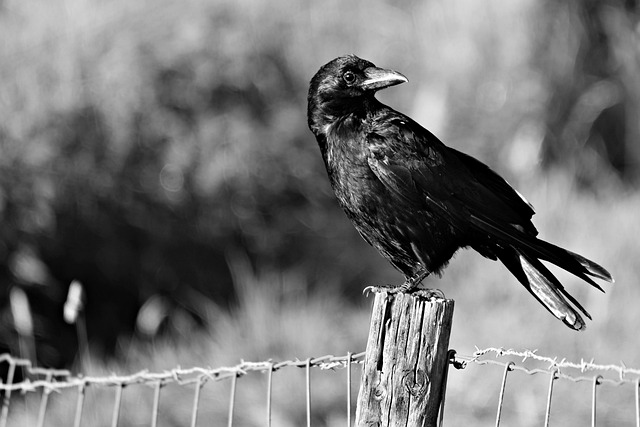The Covid shutdowns helped in some ways, including providing the opportunity to study animal activity at a time when people are not around. It seems that crows and ringneck parakeets become less active when people are not around. Conversely, the graceful prinias, who are generally considered shy, increase their activity in the absence of human activity. This is according to a new study from scientists at Tel Aviv University.
People have a negative image of crows. Think of scarecrows. Their job is to scare the crows away because they damage crops on farms. And generally, in pop culture crows are portrayed as being a bad omen, or something to fear.
Will you offer us a hand? Every gift, regardless of size, fuels our future.
Your critical contribution enables us to maintain our independence from shareholders or wealthy owners, allowing us to keep up reporting without bias. It means we can continue to make Jewish Business News available to everyone.
You can support us for as little as $1 via PayPal at office@jewishbusinessnews.com.
Thank you.
However, crows are intelligent and fascinating birds belonging to the genus Corvus, which also includes ravens, jays, and rooks. They are found all over the world, except for South America, and are known for their glossy black feathers, loud caws, and complex social behavior.
Crows are social birds and live in groups called flocks or murders. They are very vocal and communicate with each other using a variety of calls and caws. Crows are also very playful and have been observed engaging in a variety of behaviors, such as somersaulting in the air and sliding down snow-covered hills.
The study found that when humans are suddenly absent from the urban environment, the activity of the crows and that “live” in the area reduces significantly.
Crows and ringneck parakeets are characterized by their tendency to “follow” humans, are already accustomed to the noises they make and feed on their food scraps. So, it is understandable they would decrease their activity in the absence of human activity.
The research was conducted under the leadership of research student Congnan Sun, Dr. Arjan Boonman and Prof. Yossi Yovel, head of the Sagol School of Neuroscience and a member of the School of Zoology at TAU, in collaboration with Prof. Assaf Shwartz from the Landscape Architecture Department at the Technion. The study’s results were published in ELIFE magazine.
As part of the current study, the researchers took advantage of the first COVID-19 lockdown to test the interrelationship between man and nature, and placed 17 recording wide-band sensitive microphones in the Yarkon Park and the streets adjacent to it in northern Tel Aviv. With the help of artificial intelligence, an analysis of the recordings from the first days of the lockdown until 10 days after its end (March 25 to May 28) showed that the activity of the crows and ringneck parakeets was significantly lower (the calls from the crows in the park decreased by about 50% during the lockdowns and the chirping of ringneck parakeets in the park dropped by about 90%) . In contrast, the graceful prinias actually benefited from the absence of people and increased their presence by about 12%.
“When the first COVID-19 lockdown began, we, like many researchers, in many fields, identified a rare opportunity to conduct field experiments that would examine how animals behave in the absence of humans,” explained Prof. Yossi Yovel.
In general, many studies indicated the return of species to habitats that humans had “abandoned” because of the coronavirus, but most of these studies were carried out through human observation, which obviously requires humans, who are, as mentioned, the factor whose effect we want to examine.
“We decided to use microphones to allow us to monitor the activity of birds while humans aren’t present, and to disperse them densely throughout parks and residential neighborhoods,” said Yovel.
The scientists used the Yarkon Park area in Tel Aviv, where they placed 17 microphones at a distance of about 500 meters away from each other. They chose the old north neighborhood of Tel Aviv because it is an urban area adjacent to a park, to enable a comparison between the activity of the birds in a park and the activity of the birds in a city.
The researchers examined the changes in the presence of three particularly common and particularly loud bird species, which differ from each other in the extent to which they exploit humans: hooded crow, ringneck parakeet and graceful prinia. The hooded crow is classified as a “human-following species,” that is, it stays nearby to humans and feeds on their food scraps. The ringneck parakeet is an invasive species, it also follows humans. The graceful prinia is classified as “adaptive” – it adapts itself to humans, and knows how to get along in an urban environment, but does not feed on humans’ food scraps and prefers to avoid their company.
In total, the researchers recorded 3,234 hours containing around 250,000 bird calls, using artificial intelligence to identify the calls and the birds that made them. During the lockdown, human activity in the residential areas increased by 49% and human activity in the Yarkon Park – while leaving homes to go to parks was still prohibited – decreased by 31%.




